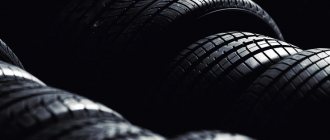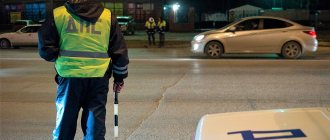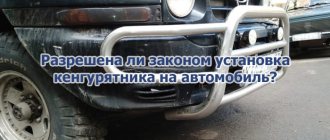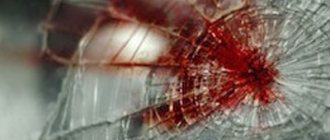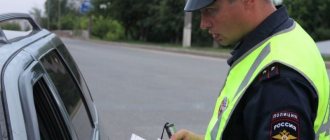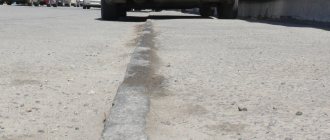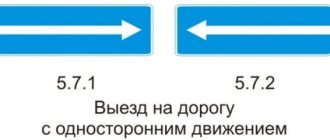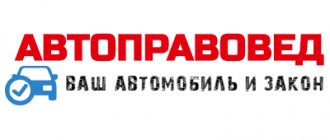What kind of first aid kit and fire extinguisher should you have?
Fire extinguisher. The law requires at least one fire extinguisher with a capacity of 2 liters in a car or truck. The certificate must indicate GOST R-51057.
The shelf life of the cylinder is 10 years, and that of the powder mixture is 5 years. This means that the cylinder needs to be recharged every 5 years. This can be done at any store that sells fire fighting equipment. Costs on average 120 rubles.
First aid kit. Since 2009, the composition of the first aid kit has changed - there are no medicines there. Only dressings to stop the bleeding and save the person while the ambulance is on the way: bandages, napkins, plasters of various sizes, a tourniquet, gloves and a mouth-to-mouth resuscitation device.
Read more about the composition of a car first aid kit in 2021.
What types of fire extinguishers are used
- portable (manual), volume up to 4 l;
- portable industrial, volume up to 20 l;
- mobile on trolleys (with mechanical start) up to 400 l;
- stationary (triggered automatically by a signal from the security system).
Specifications
By type of reagent, they work on:
- pene - (OHP and ORP);
- water - (OV);
- powder substances - (OP);
- emulsion sprayed in air (AVE);
- gas (freon OX, carbon dioxide OU);
- combined.
By destination class:
- A - wood or paper;
- B - gasoline, varnishes, solvents;
- C - methane, propane and butane;
- D - metal alloys: titanium, magnesium;
- E - power equipment under voltage up to 1000 V;
- K - fats, oils, tras - fats.
Foam fire extinguishers
Widely used in the initial stages of fire of solids (wood and paper), flammable liquids and de-energized electrical appliances. Coverage area up to 1 m².
On a note. The foam fire extinguisher was invented in 1904 by the Russian inventor A.G. Laurent.
The operating principle is based on two types of foam:
1. In OCP - chemical foam is formed as a result of mixing acid and alkali.
To activate it, the user presses the locking and starting device.
Shakes and turns the canister over with the nozzle facing down.
The substances filling the balloon mix and react, expanding in volume.
2. In the ORP, the equipment is equipped with an additional gas cartridge.
How to use a foam fire extinguisher:
- remove the seal and check;
- point the nozzle at the source of fire;
- press the gas cartridge start button;
- press the central lever on the body.
Attention. To avoid an explosion when extinguishing flammable mixtures, it is necessary to maintain a safe distance of at least a meter.
Disadvantages of gas modifications
- the range of operating air temperatures is insignificant (from 5 to 45°C);
- increased corrosive activity can damage the surface of the object;
- The fire extinguisher must be recharged annually.
You can't extinguish with foam:
- alcohols (absorb water and destroy the foam structure);
- electrical appliances and wires (conducts current);
- products made from an alloy of alkali metals potassium and sodium (the released hydrogen enhances combustion).
According to fire safety rules, OHP and OVH models undergo a scheduled inspection once a year during storage. And once every 5 years they are filled with new chemical reagents.
Powder fire extinguishers
Powder fire extinguishers are universal for extinguishing all types of fires, ranging from wood, flammable liquids to electrical equipment under voltage up to 1 kW. Used in fires of all complexity classes, including power plants. Operate over a wide temperature range.
The markings on the label indicate the capabilities of the fire extinguisher. ABC class OPs have a universal combination of properties. If the “A” symbol on the label is crossed out, then it will be useless to extinguish rags, burning wood, plastic or cardboard products. In bulk, these substances will remain smoldering and over time they will begin to ignite again.
You also need to take into account that at the moment of spraying, powders can create clouds of dust.
Dust settles on the operator’s organs of vision, hearing, and breathing, and can cause lacrimation, coughing, and lead to allergic reactions. In addition, the powder cloud has a destructive effect on electronic equipment and objects moving in a circle. When dust gets into the ventilation system of computers, it damages them. Therefore, OPs are not suitable for use in computer centers, museums and exhibitions.
Let's look at how to use a powder fire extinguisher in a critical situation:
- you need to make sure that the tube spraying the powder does not have clamps, twists or bends;
- activate the starter;
- approach the fire from a windy direction;
- extinguish burning liquid media by spraying the substance over the surface of the liquid, and not directly into the flame;
- direct the stream to the area bordering the fire and gradually narrow it;
- Apply the jet to electrical installations with short discharges at intervals of 5-6 seconds;
- keep the cylinder at a distance of 1 m from the fire zone;
- When extinguishing dry vertical objects, start from the bottom and work your way up;
- burning liquids flowing vertically begin to extinguish from top to bottom.
At large sites, two or three fire extinguishers speed up extinguishing and increase work efficiency.
Attention. Powder agents are not used to extinguish materials that can sustain combustion without air access. These include products made from alloys of alkali and alkaline earth metals.
Automatic extinguishing
Automatic OPs are launched without the participation of personnel. They are installed in uninhabited rooms up to 50 square meters. m. ABC class fire extinguishing powders are used to stop the combustion of solids, petroleum products, and power plants at 5,000 V. They are often combined with portable ones or instead of them.
How to use fire extinguishers - general rules
According to the instructions for use, to quickly put out a fire you need to pick up a fire extinguisher and quickly perform 4 actions:
- remove the limiter securing the shut-off valve handle (pin);
- press to move the valve handle from the set position;
- point the nozzle towards the fire zone;
- smoothly and confidently control the jet of reagent extinguishing the fire.
How to use a car fire extinguisher
If you discover a fire, do not lose your composure. Pick up the fire extinguisher and unlock it. To do this, break the pin by turning it around the axis. This will break the plastic safety strap. Press the lever for 3 seconds. It's enough. Your fire extinguisher is activated and ready to use. If the model is equipped with a pressure gauge, then immediately begin extinguishing the fire by pressing the control handle.
If you have a standard model (without a pressure gauge), you need to pierce the cartridge to create excess pressure in the cylinder. To do this, sharply turn the cylinder upside down with the nozzle and hit the lever. After 3 sec. a reaction between the chemical components will begin.
Return the balloon to its original position and keep it upright. Press the lever and start spraying the reagent.
To be safe, be sure to wear thick gloves and a face mask.
Rules for using a gas fire extinguisher
We will separately consider how to use a carbon dioxide fire extinguisher (CO), as one of the most popular types.
Note that the op-amp is included in the group of gas devices. When using them, you must always use personal protective equipment: gloves and a respirator.
This requirement is explained by the fact that even small portable gas models have enormous power. The gases released from them intensively absorb oxygen from the air. Therefore, to preserve respiratory functions, a gas mask or respirator is recommended.
You should also not touch the nozzle of a working fire extinguisher without gloves. The temperature of the gas supplied to the fire zone can drop to – 50′ C or – 70′ C, which can lead to frostbite of the extremities.
Air emulsion fire extinguishers
Among other primary fire extinguishing means, EVE are the most effective and environmentally friendly. They are used for solid, liquid and gaseous flammable media, power electrical systems of the ABSE class. They operate reliably in any climatic conditions in the temperature range from – 40 °C to +50 °C.
The undeniable advantages of air-emulsion models are:
- economical (minimal) consumption of fire extinguishing agent;
- no damage from liquid spills at the facility;
- does not create dust;
- does not reduce visibility.
HVE is used in enclosed spaces, directly in the presence of people, without personal protective equipment, but in compliance with safety standards.
Fines for not having a first aid kit and fire extinguisher
Fine for not having a first aid kit in the car in 2021. If a traffic police officer does not see a first aid kit in a vehicle, he will fine you 500 rubles.
Fine for expired first aid kit. The shelf life of first aid kits is on average 4 years. If the period has expired, the inspector will equate this to the lack of a first aid kit. The fine is the same - 500 rubles.
Fine for not having a fire extinguisher in a car in 2021. The fine amount is the same as for lack of a first aid kit - 500 rubles.
Fine for an expired fire extinguisher in a car. In practice, inspectors rarely look at the date on a fire extinguisher. But if a vigilant employee comes across, he will issue a fine of 500 rubles. So says Art. 12.5 of the Administrative Code.
Requirements for a warning triangle
A new example of an emergency sign is determined by the standards of GOST 41.27. 2001 and must meet the following requirements:
- be an equilateral triangle with an edge length of 500-550 mm;
- have a width of each side of 100 mm;
- contain a reflective strip 50 mm wide along the entire outer perimeter;
- be equipped with a locking leg for stability.
In addition, you must be able to use the emergency structure. A whole lesson in a driving school is devoted to the rules for installing a sign, however, it would be useful to remind these conditions.
- In a populated area, the distance from the car to the sign must be at least 15 meters, more is possible, but not less;
- On the highway, the sign must be installed at a distance of at least 30 meters from the disabled vehicle. This is due to the high speed of moving cars.
It is important to purchase an emergency attribute, observing the specified standards: correct dimensions, reflective stripes and fastening.
Otherwise, non-compliance of the sign will be regarded as an administrative offense, entailing a fine or a verbal warning.
Can a traffic police inspector demand to see a first aid kit and fire extinguisher?
Yes maybe. The inspector is obliged to ensure safety on the road through his actions. If the car does not have a first aid kit or fire extinguisher, this is a violation of traffic rules.
Verification process. The inspector has the right to inspect the car to identify violations of the rules. He may ask you to open the trunk and show the necessary items.
How is a violation recorded? There are no automatic ways to check a first aid kit and a fire extinguisher yet, so a state traffic inspector stands on the road and randomly stops cars. If after the inspection he discovers that there is no first aid kit or fire extinguisher, there will be a protocol, a violation order and a fine.
Alexander Torvard, car lawyer In practice, inspectors rarely stop a car just to check the first aid kit and fire extinguisher. This equipment is often checked during technical inspection. If everything is in place and there are no complaints about the technical condition of the car, they will issue a diagnostic card. Without it, you cannot buy an MTPL policy.
Are such actions legal and are there any grounds for them?
On the one hand, the Code of Administrative Offenses does not impose the obligation to present the inspector with a fire extinguisher, first aid kit and warning triangle. In parallel with this, the current version of the Traffic Rules does not contain separate clauses regarding the fact that the traffic police inspector has the right to demand the provision of this list of things and the obligation of the motorist to fulfill such a request.
On the other hand, the appendix to the “Basic provisions for the approval of vehicles for operation” contains information that buses, cars and trucks, wheeled tractors must be equipped with a first aid kit, a fire extinguisher and a warning triangle. In their absence, Article 12.5 of the Code of Administrative Offenses provides for the responsibility of motorists for using vehicles without ensuring their proper condition. Since traffic control is carried out directly by traffic police officers, theoretically they have the right to check their presence.
Guided by the basic rights and responsibilities of traffic inspectors reflected in the regulations (Order of the Ministry of Internal Affairs of the Russian Federation No. 664 “On approval of Administrative Regulations”), which came into force in October 2017, it can be noted that the traffic police officer does not have the direct right to check such things.
That is, the traffic inspector does not have the right to simply stop the car and demand that they be presented to check availability or expiration date. Such actions are regarded as an excess of existing official authority and can subsequently even be appealed in court if there is evidence of the unlawfulness of the actions and demands of the inspector. Essentially, a traffic police officer has two options in which he can check the specified things:
- Passing a technical inspection of the vehicle;
- Drawing up a vehicle inspection protocol.
In turn, to conduct such an inspection there must be compelling reasons, in particular, search activities, orientation, interception plan, and so on. During the inspection of a car, a protocol must be drawn up, which reflects the basis for its conduct, and the inspection itself must be carried out in the presence of two witnesses. In a situation where, in the opinion of the motorist, the actions of the traffic inspector were unlawful, he has the right to send a complaint to the inspection department, reflecting all the circumstances and, if possible, attach video materials of the case.
How and where to pay a fine for not having a first aid kit or fire extinguisher
Website "Traffic Police Fines". If the check shows a fine, click “Pay.”
Review your collection details again and click “Proceed to Payment.”
Fill in the fields with your card details - they are not stored on the site.
Receipts after payment are stored in the “Payment Receipts” section of your personal account.
Public services. After registering on the site and confirming your identity, go to the fines check page. To do this, write “fines” in the site search - then the service will prompt you and direct you to the desired section. You will receive a receipt by email.
Traffic police website. If the payment has been completed, the payment system will send a check to the specified email.
Remember
- The fine for not having a fire extinguisher and first aid kit in the car is 500 rubles.
- If the vehicle does not have both items, the police officer cannot issue two reports. If you don’t have both a fire extinguisher and a box of medicines, there is only one penalty - a fine of 500 rubles.
- A fine may be issued if the expiration date has expired - this applies to the first aid kit and fire extinguisher.
- There is a discount on the fine - you can pay 250 instead of 500 rubles if payment was made within the first 20 days from the date of the decision.
- The most convenient way to check and pay a fine is on the Traffic Police Fines website.
All articles by the author: Evgeniy Lesnov
Requirements for technical inspection
All vehicles are required to periodically undergo maintenance in order to obtain an MTPL policy. Which vehicles are allowed to be operated without a fire extinguisher is stated in Government Decree No. 1008 of December 5, 2011, which regulates technical inspection. This document was last updated in November 2021.
In accordance with regulations, fire fighting equipment must be installed on all vehicles. The exception is small-sized motor vehicles.
Based on the study of the provisions describing the maintenance standards, we conclude that without a fire extinguisher it is possible to operate motorcycles both with and without a side trailer.
The only difference is that if such a vehicle has a sidecar, then a first aid kit and a triangle (warning triangle) must be present.
